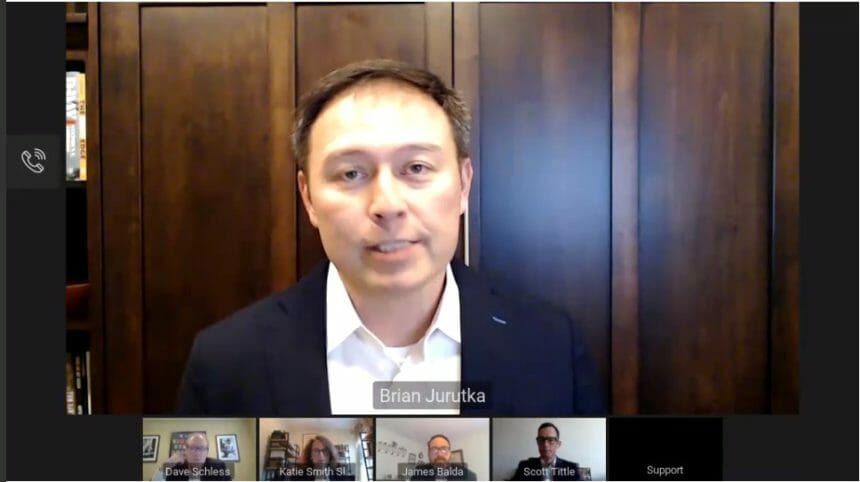
Crisis causes focus. And during the COVID-19 crisis, top senior living industry leaders have combined efforts to amplify their voices and work toward a common goal of supporting older Americans.
Those industry leaders literally came together Thursday, online, during the 2020 National Investment Center for Seniors Housing & Care Fall Conference to share their stories of advocacy and impact.
“There have been some strong steps forward,” NIC President and CEO Brian Jurutka said. “There seems to have been and continues to be an unprecedented level of cooperation between the organizations during the pandemic.”
But they concede there is still much to be done.
Regaining trust
David Schless, president of the American Senior Housing Association, said ASHA used its consumer-facing website and social media platform, “Where You Live Matters,” to respond to some of the inaccurate and negative stories in the news and “set the record straight” on what actually was going on in senior living communities.
“By early summer, consumer sentiment improved markedly,” Schless said. “It is a concerted, ongoing effort.”
ASHA is about to start a second phase of the campaign to target prospective residents and their families through testimonials from family members, residents and staff members to build confidence and trust in the product.
“The onus is on us to rebuild trust and to restore confidence in our services and settings,” LeadingAge President and CEO Katie Smith Sloan said. “It’s going to take time. It’s going to take a lot of communication to get us to that point. From a consumer perspective, we’re not in a good place. We’ve got work to do.”
Early on, the major trade associations collaborated informally to identify member priority and move in the same direction.
“We ultimately got into a groove,” Argentum President and CEO James Balda said. “The organizations all identified, as our members were telling us, the priorities were really around PPE, testing, financial relief, liability protections. That ultimately evolved into the need for us to collaborate on vaccines and vaccine administration.”
Balda said industry leaders “were saying essentially the same things to the same people, oftentimes together,” in the form of political action committee calls, joint letters and an industry task force focused on liability protections. That, he said, resulted in testing kits delivered to communities, liability protections at the state level and financial relief funding from the federal government.
Beyond COVID
He sees that unified collaboration continuing in the post-COVID environment.
“As we emerge from this crisis, there’s going to be a real increased focus on our industry from federal and state policymakers, and it’s going to be critical for all of us to work together to make sure that we’re able to support a strong state regulatory framework and meet the needs of our members going forward,” Balda said.
Sloan said that although each association represents a slightly different slice of the aging services field, they overlap in many areas.
“What we’ve learned is, there’s a new issue everyday, and the old issues never go away, and we continue to work on them,” she said, adding that it’s been a lot of “blocking and tackling.” “It’s simply what’s required in a crisis like this pandemic.”
Scott Tittle, executive director of the National Center for Assisted Living, likened the battle against COVID-19 to a war on multiple fronts, including fighting the virus itself and mitigating it once it’s in, the financial battle to prevent the virus from getting into buildings, the public relations battle, and the liability battle.
“There was an education effort that was very collaborative from all of us and others to educate the Hill and the White House on the healthcare components that are involved in senior living,” Tittle said. “We need to continue to educate the Hill and members of the press and some of our future clients to understand there were good faith efforts undertaken in buildings to help save people’s lives with no PPE, no access to testing, a vaccine has not been developed, and funding has been slow to come.”
Tittle said liability issues will significantly affect the senior living business model in the future. Even before COVID-19, he said, the market was difficult, with significant exclusions for some infections, fewer carriers offering policies to long-term carriers, and deductibles and premium increases that will create a significant financial strain on operators.




